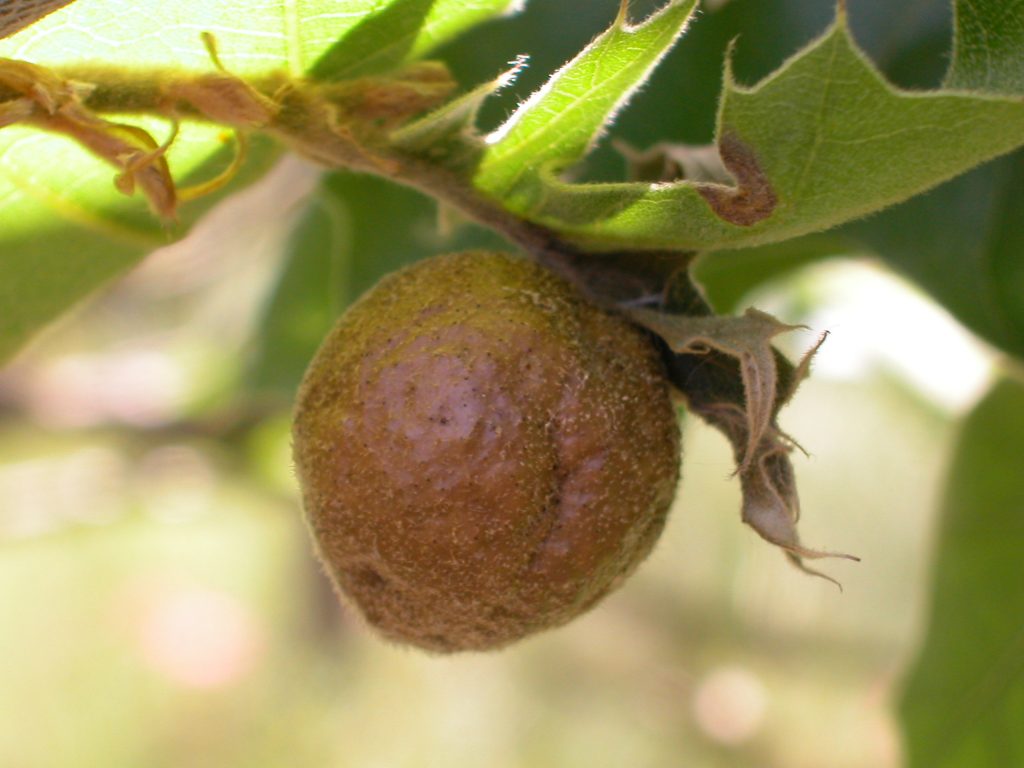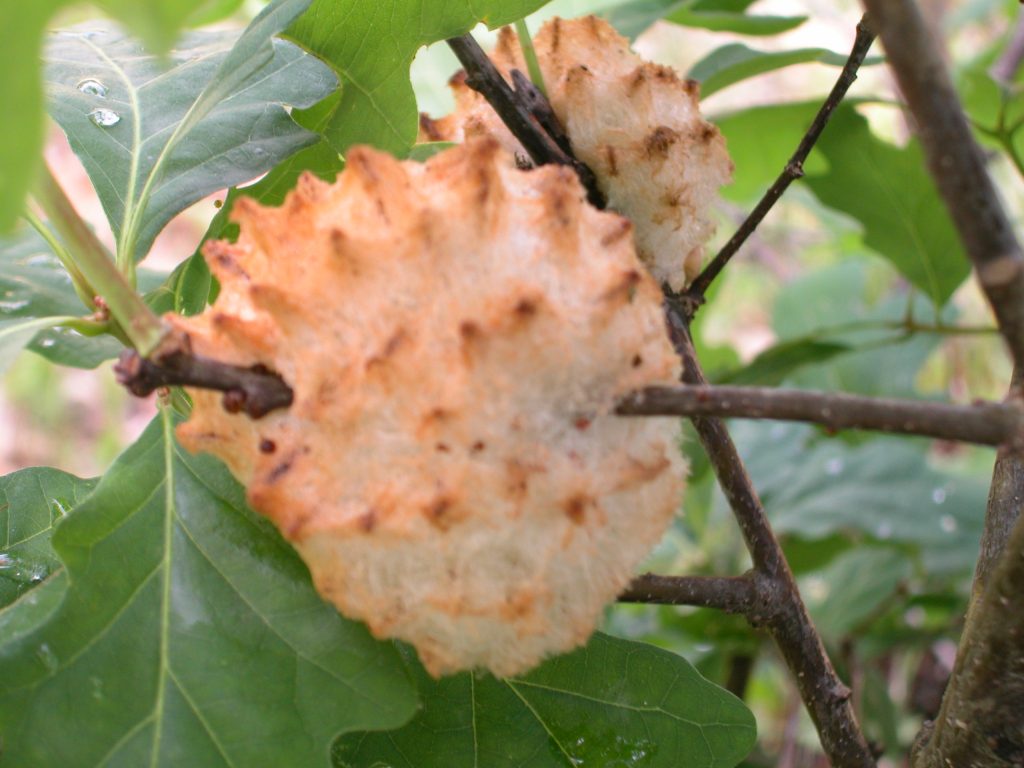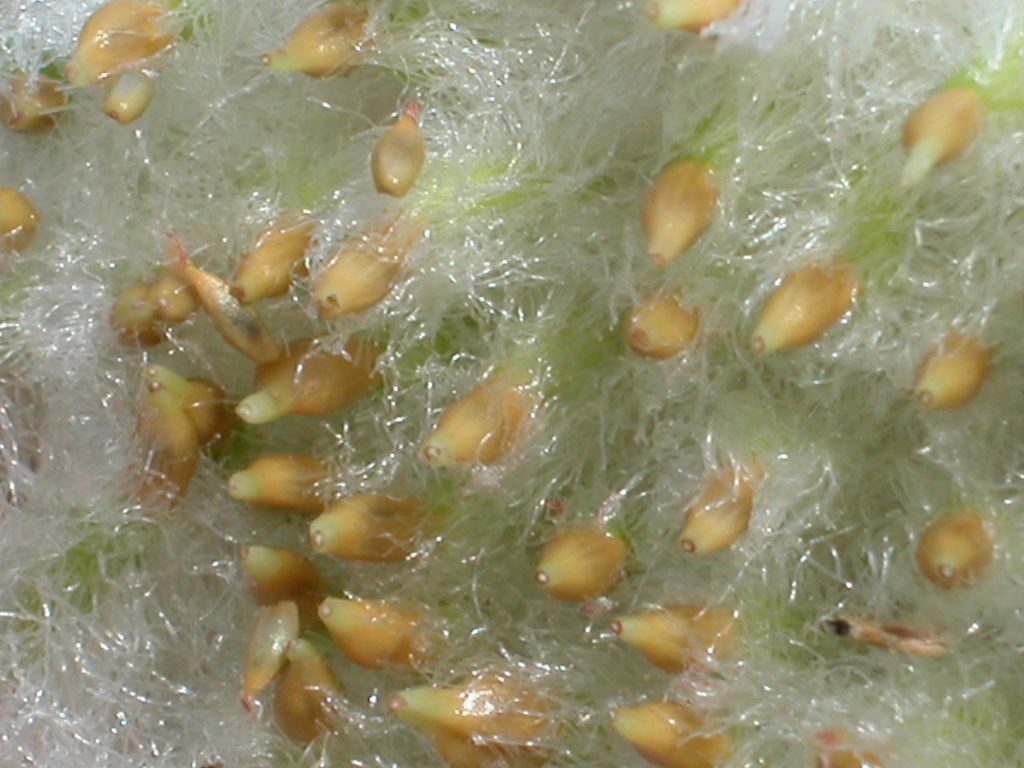By Todd Lanigan, DNR Forest Health Specialist, Eau Claire, todd.lanigan@wisconsin.gov or 715-210-0150
This time of year, you may be noticing some large growths on oak leaves. You are either seeing oak apple gall and/or wool sower gall. These galls are formed by a small, stingless wasp, known as a Cynipid Wasp.
For the oak apple gall, when the female lays her egg, she injects a growth regulator that causes the leaf tissue to form around the egg. When the larvae begin to feed for the wool sower gall, this causes the gall to form. The galls in both cases protect the developing wasps from the elements and predators.
Oak apple galls are round and initially are green in color. Eventually, the gall turns brown as the wasp larva matures inside.

An oak apple gall
If you open up the gall, you will see a small brown growth in the center. This is where the wasp larva is developing.

A brown larva chamber in the center of an oak apple gall
When the larva pupates and emerges from the gall, there will be a small hole where the wasp emerged.
Wool sower gall, also known as oak seed gall, looks like cotton candy or a cotton ball on the leaf. The gall is somewhat sticky, as well.

A wool sower gall
If you pull the gall apart, you will see small seed-like structures inside. These are the chambers where the wasp larvae are developing and will eventually emerge as wasps.

A seed-like larval chambers inside wool sower gall
Both the oak apple gall and wool sower gall are cosmetic issues. These galls are not a tree health concern, so there is no need for concern or control.
